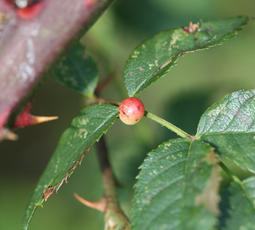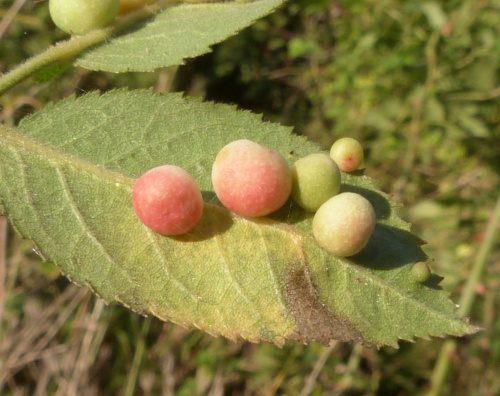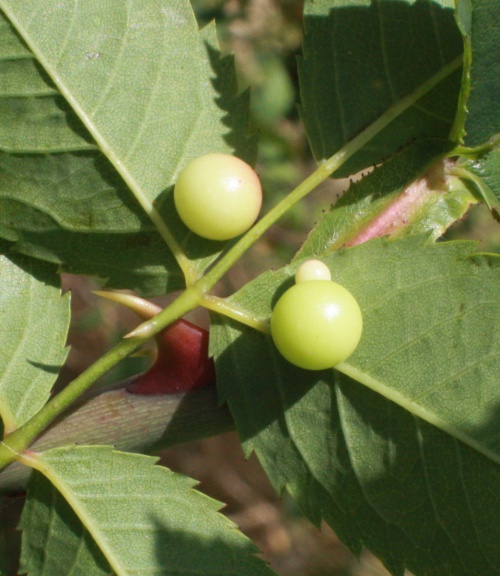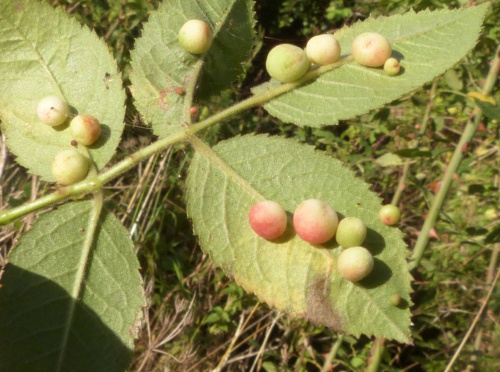Smooth Pea Gall Wasp - Diplolepis eglanteriae/nervosa
The smooth rose pea gall is caused either by cynipid wasp Diplolepis nervosa or by Diplolepis eglanteriae on the leaves of the Dog-rose (Rosa canina). The galls are identical and Diplolepis eglanteriae cannot be recorded from the gall; adults have to be bred and keyed out.
Diplolepis nervosa also produces spiked galls, and these can be determined - see separate species account.
Anywhere that the host Dog-rose plant is found.
The adult insects emerge from their galls in spring.
Each gall is, in effect, a hollow, fleshy nursery chamber for a small white grub, the larva of the Diplolepis gall wasp, which feeds on the chamber wall. The galls appear to detach from the leaves before leaf fall and will lie in the leaf litter until the grub pupates and emerges as the small adult wasp, only about 4 mm long.
Quite common and widespread in Britain.
Fairly common in Leicestershire and Rutland.
Leicestershire & Rutland Map
Enter a town or village to see local records
MAP KEY:
Yellow squares = NBN records (all known data)
Coloured circles = NatureSpot records: 2020+ | 2015-2019 | pre-2015
UK Map
Species profile
- Common names
- Smooth Pea Gall
- Species group:
- Bees, Wasps, Ants
- Kingdom:
- Animalia
- Order:
- Hymenoptera
- Family:
- Cynipidae
- Records on NatureSpot:
- 128
- First record:
- 04/07/2009 (Calow, Graham)
- Last record:
- 10/10/2023 (lemmon, roy)
Total records by month
% of records within its species group
10km squares with records
The latest images and records displayed below include those awaiting verification checks so we cannot guarantee that every identification is correct. Once accepted, the record displays a green tick.
In the Latest Records section, click on the header to sort A-Z, and again to sort Z-A. Use the header boxes to filter the list.





